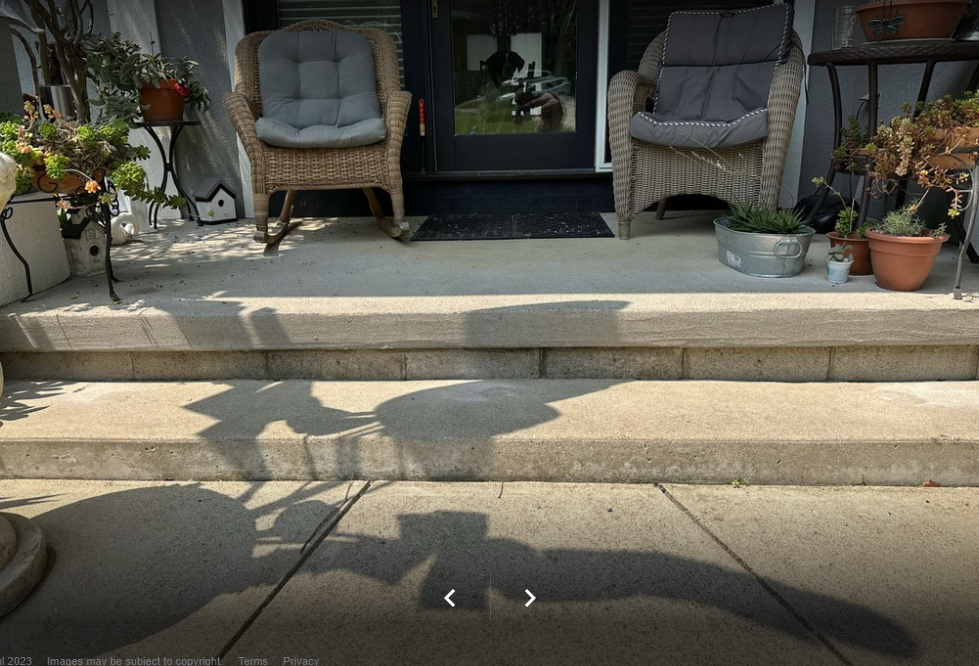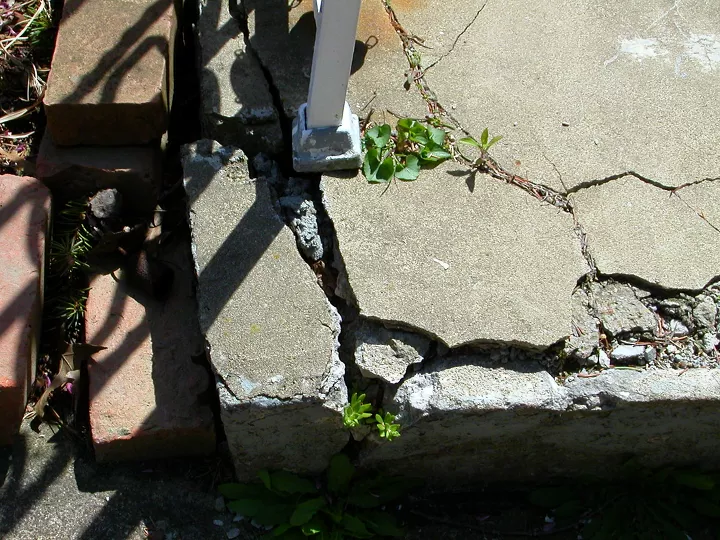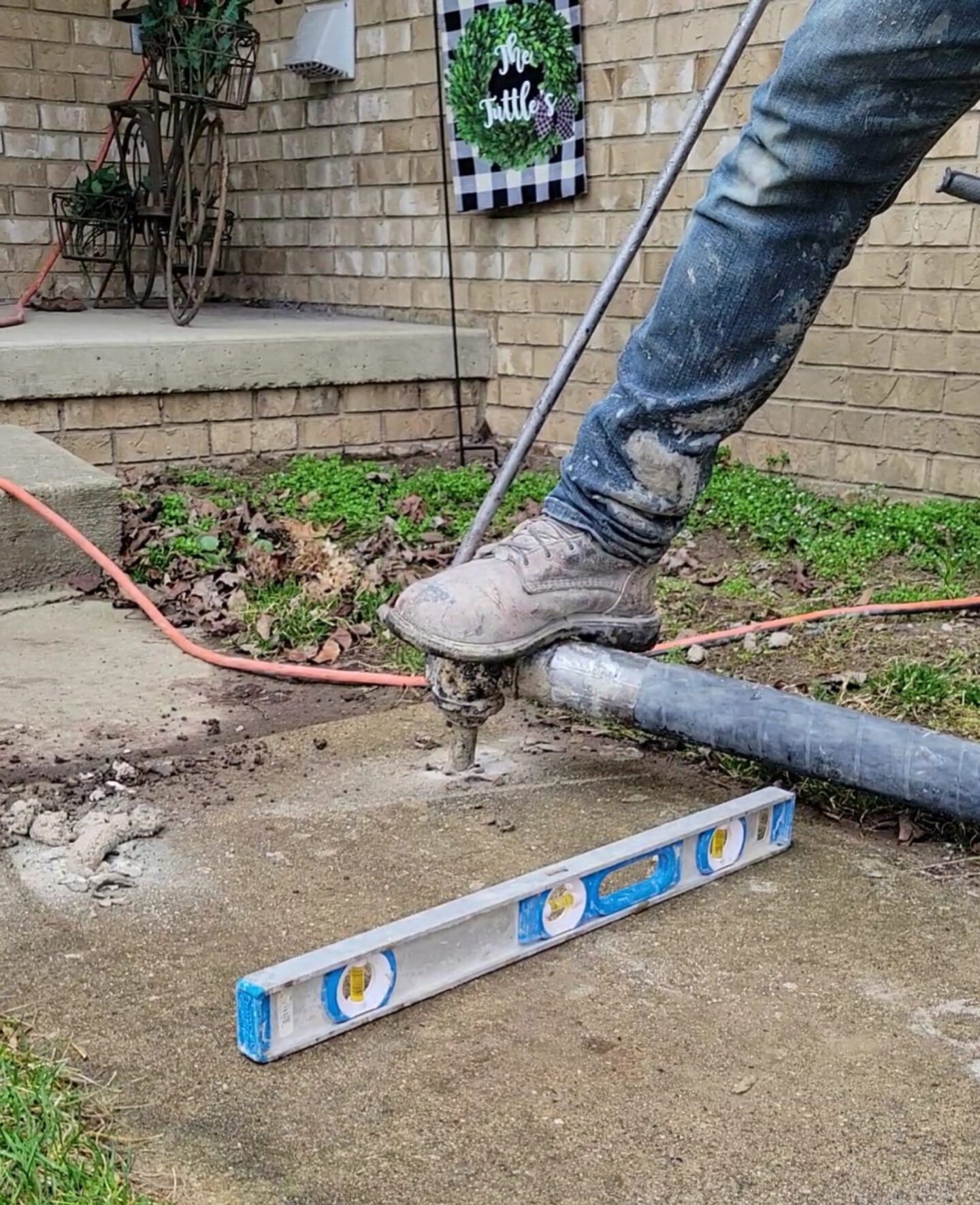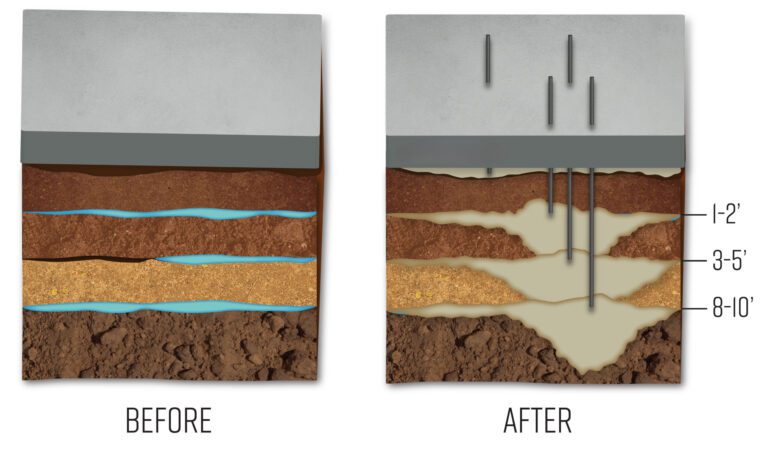

Concrete lifting, also known as slabjacking or mudjacking, is a popular technique used to repair and level sunken or uneven concrete surfaces. This cost-effective and minimally invasive method involves injecting a stabilizing material beneath the sunken concrete, raising it back to its original position. While concrete lifting is suitable for many situations, there are instances where it might not be the best solution. In this article, we will explore those scenarios where concrete lifting is not an option and discuss alternative methods to address concrete settlement issues.
Concrete lifting is most effective when dealing with minor to moderate settling issues. If the concrete has suffered extensive damage, such as severe cracks or crumbling, attempting to lift it may worsen the situation. In such cases, it’s essential to consider complete concrete replacement as the safest and long-lasting solution.
If the structural integrity of the concrete is compromised due to excessive settling or underlying issues, concrete lifting may not be a viable option. In these situations, a thorough inspection by a structural engineer is crucial to assess the extent of the damage and recommend appropriate repairs or replacements.
Concrete lifting relies on the ability to inject stabilizing materials beneath the concrete slab, which can then fill voids and lift the sunken surface. However, if the soil beneath the concrete is excessively unstable or has a high water content, it may not provide the necessary support for the lifting process. In such cases, stabilizing the soil or implementing deep foundation solutions might be necessary before considering concrete lifting.
When voids or cavities are present beneath the sunken concrete, they need to be adequately filled before attempting any lifting. If these voids are too large or extensive, it might not be practical to fill them, making concrete lifting unfeasible. Alternative solutions like foam injection or grouting may be considered in such situations.
Concrete lifting requires the drilling of small holes in the concrete surface for the injection process. If there are adjacent obstacles or utility lines, such as gas lines, electrical conduits, or plumbing, that could be affected by the drilling process, it may not be safe to proceed with concrete lifting. In such cases, alternative repair methods should be explored.
In some cases, the cost of concrete lifting may outweigh the benefits, especially when dealing with large areas of concrete settlement. If the extent of the problem is significant and there are budget constraints, alternative solutions like slab replacement, piers, or underpinning systems might be more cost-effective in the long run.
Concrete lifting, or slabjacking, is an effective and popular method for addressing sunken or uneven concrete surfaces in many scenarios. However, it’s essential to recognize its limitations and understand when it might not be the most suitable solution. In cases of extreme concrete damage, compromised structural integrity, unstable soil conditions, the presence of large voids, interference with utilities, or economic constraints, alternative methods should be considered. Always consult with a professional concrete contractor or structural engineer to assess the specific situation and determine the best course of action for lasting and safe concrete repairs.



Get the quality you deserve from Detroit Concrete Leveling. If you’re ready to start your project, contact us today for a free, no-obligation quote.